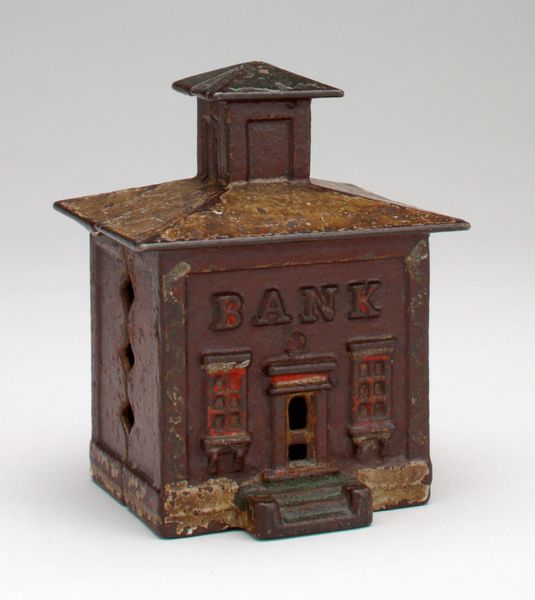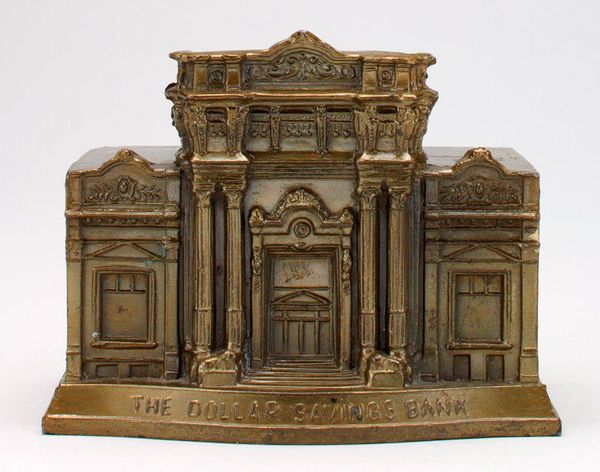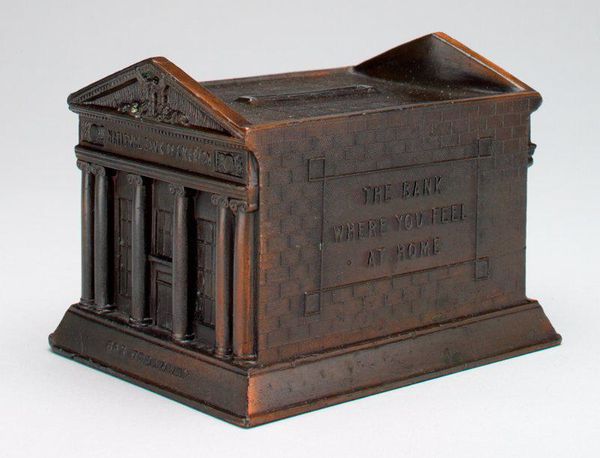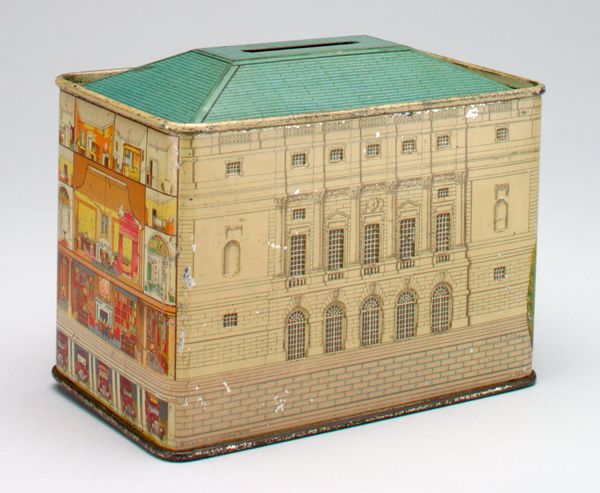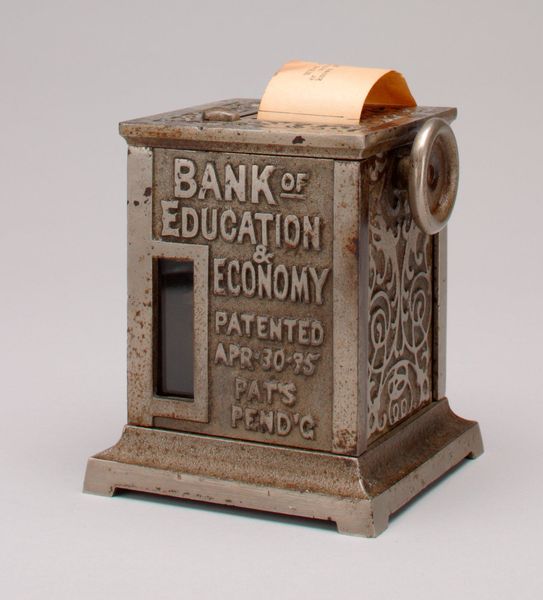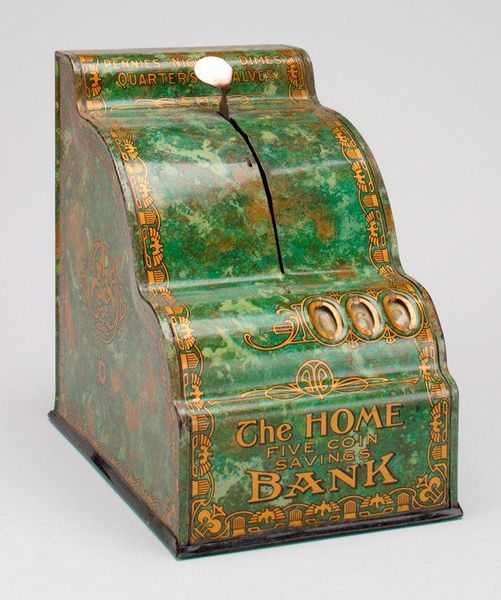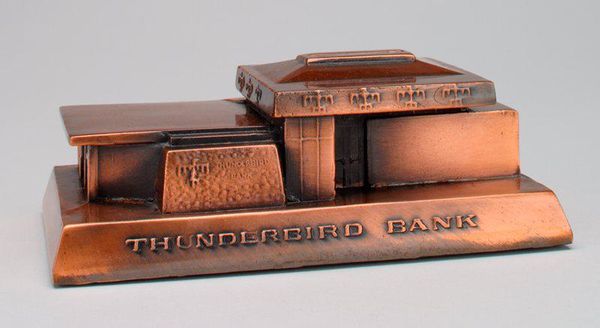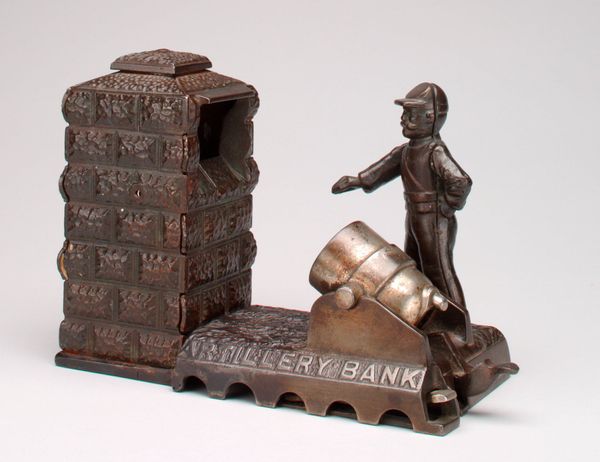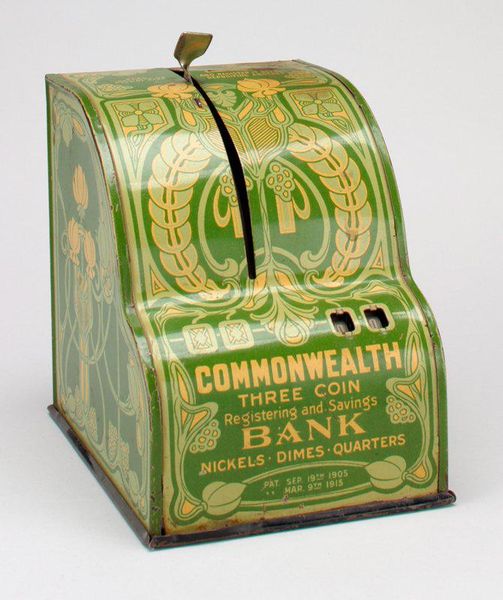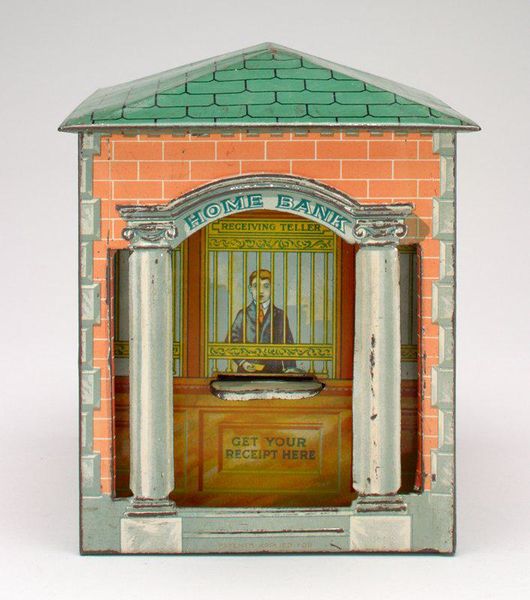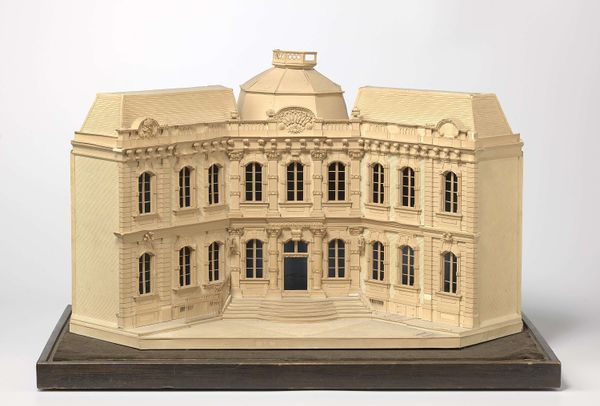
Dimensions: 4 15/16 x 6 11/16 x 4 1/2 in. (12.54 x 16.99 x 11.43 cm)
Copyright: No Known Copyright
Curator: At the Minneapolis Institute of Art, we have a piece entitled "Wireless Bank," dating back to around 1926. It is considered mixed-media due to its metal, wood and print components. Editor: Well, the form certainly mirrors classical architectural tropes; however, its overt playfulness belies a more profound commentary on, I would wager, socio-economic systems. There is a certain naive and optimistic rendering, perhaps of a bygone era, don’t you think? Curator: I appreciate that observation. Given the post-World War I era of its creation, this object can serve as a document of the evolving American economy, mirroring both progress and the illusion thereof. Note the prominent word "Wireless" stamped on the pediment, and how technology as such permeates societal fantasies during a decade marked by rapid technological change. Editor: Yes, "Wireless"—its inherent futurism—certainly contrasts with its classically derived format. Could we then read this "bank" as a metaphorical container for societal desires, both tangible and abstract? Observe the faux-brick patterning to the bank's right which is rendered with print onto tin; one might analyze the interplay between representation and reality, in consumerist society as a whole, no? Curator: Indeed. I view the composition itself –the proportions of the doorway, for example– as reflective of period aspirations toward financial security and homeownership. This juxtaposition creates an uncanny effect where the rational facade belies the rather irrational drives within an economy based around individual, competitive values. Editor: Interesting! I’m increasingly fixated on the materiality of the base. The layers of wood are such an unconvincing podium on which this metal façade rests; again this speaks, loudly, of illusory structure! The architectonics belie a delicate state of affairs, if I’m to say so myself. Curator: That fragility is mirrored in the print applications too. If you examine it closer, you can see the patina which denotes some history and perhaps its decline, suggesting also that our infrastructures will show age despite technological evolution, that is inevitable decay… It may be that time will weather all surfaces in similar patterns regardless of how well printed. Editor: So this becomes a sort of memento mori, cast within an allegorical representation. Despite it ostensibly being about accruing personal finance, it is actually, perhaps a commentary on the impermanence of capital? Curator: Precisely. Editor: Profound. It’s astonishing the complexities that can come from considering such a small and seemingly innocuous piece.
Comments
No comments
Be the first to comment and join the conversation on the ultimate creative platform.
